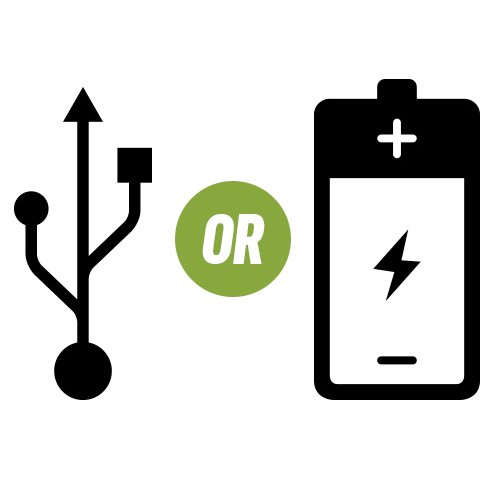Lights Buying Guide

If you’re riding either before sunrise or after sunset, it’s imperative that you attach appropriate lights to the front and rear of your bike. Firstly, to see - even if you travel along a fairly well lit route, you may come across potholes, gaps in the street lighting, or other hazards. But also to be seen - cars, pedestrians, and other riders want to avoid you just as much as you want to avoid them.
Charging Options
 Charging options are another important consideration to make when selecting the right bike light for you. Many models feature USB charging capabilities which do away with the need for a dedicated charging unit. Rechargeable lights will also save you money over time as you won’t need to pay for replacement batteries every time they run flat.
Charging options are another important consideration to make when selecting the right bike light for you. Many models feature USB charging capabilities which do away with the need for a dedicated charging unit. Rechargeable lights will also save you money over time as you won’t need to pay for replacement batteries every time they run flat.
Brightness
 Another factor to consider is how powerful the light is which is measured in lumens. Generally speaking the higher the lumen count the further ahead you’ll be able to see in front of you. Higher lumens will also help you to be seen in mixed light conditions such as city traffic, however it is important to position high lumen lights on your bike in a manner which isn’t likely to drivers and pedestrians that you’re approaching. Pointing the light at a slight angle (towards the ground) is considered good riding etiquette and will also serve to highlight any obstacles in your path.
Another factor to consider is how powerful the light is which is measured in lumens. Generally speaking the higher the lumen count the further ahead you’ll be able to see in front of you. Higher lumens will also help you to be seen in mixed light conditions such as city traffic, however it is important to position high lumen lights on your bike in a manner which isn’t likely to drivers and pedestrians that you’re approaching. Pointing the light at a slight angle (towards the ground) is considered good riding etiquette and will also serve to highlight any obstacles in your path.
Settings
 Selecting a light with multiple illumination settings (such as high, low and flashing) will help you manage your light’s battery usage. Generally flashing modes use less power than steady beams and are also more eye-catching to those around you, however it is not advisable to use a flashing mode on your front light when riding in poor light as this will make it difficult to see the road in front of you.
Selecting a light with multiple illumination settings (such as high, low and flashing) will help you manage your light’s battery usage. Generally flashing modes use less power than steady beams and are also more eye-catching to those around you, however it is not advisable to use a flashing mode on your front light when riding in poor light as this will make it difficult to see the road in front of you.
 Your store
Your store 



